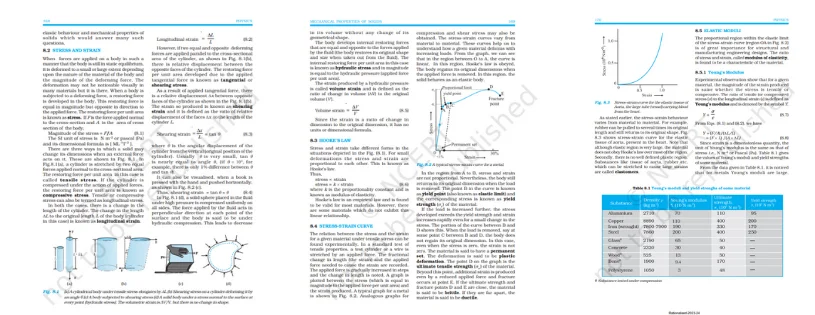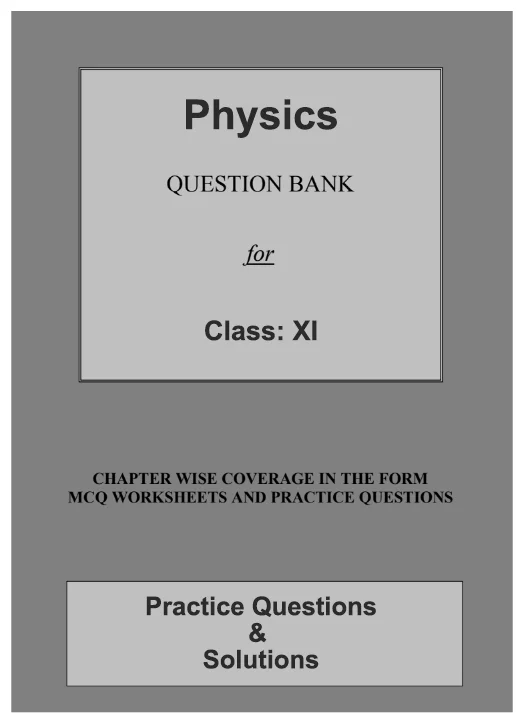Hooke's Law, a cornerstone in the realm of physics and materials science, elucidates the fundamental relationship between the force applied to a spring or elastic material and its resulting deformation. Named after Robert Hooke, this law succinctly states that the force needed to extend or compress a spring by a distance is proportional to that distance. This simple yet profound principle not only underlies the behavior of elastic materials but serves as a pivotal concept in understanding the mechanics of solids, guiding engineering designs and innovations across various industries. Let's delve into the intricacies of Hooke's Law and its far-reaching implications.

Exploring the Foundations of Hooke's Law
Experimenting with Hooke’s Law:
Experimenting with Hooke's Law can be a fun and educational way to understand the relationship between force and displacement in a spring. Here's a step-by-step guide for a simple hands-on experiment:
Materials Needed:
- Spring: Obtain a helical (coil) spring. You can find springs in hardware stores, or you may use springs from common household items like retractable pens.
- Ruler or Measuring Tape: To measure the displacement of the spring.
- Weights or Force Sensor: You'll need a method to apply force to the spring. This could be weights, or if available, a force sensor.
- Support Structure: Set up a support structure to hang the spring vertically. A ring stand or a clamp can be useful for this.
- Notebook and Pen: Record your observations and measurements.
Solving Problems Using Hooke’s Law:
Certainly! Let's go through a step-by-step process for solving problems using Hooke's Law, which is expressed by the equation F=−kx, where F is the force applied, k is the spring constant, and x is the displacement from the equilibrium position.
Problem-Solving Steps:
1. Identify Knowns and Unknowns: Identify the given values in the problem, including the force applied (F), the spring constant (k), and the displacement (x). Determine which variable you need to find.
2. Check Units: Ensure that all units are consistent. The force is typically measured in Newtons (N), displacement in meters (m), and the spring constant has units of N/m.
3. Apply Hooke's Law Equation: Write down Hooke's Law equation: F=−kx.
4. Rearrange Equation if Necessary: If you need to solve for a particular variable, rearrange the equation accordingly. For example:
To find force (F): F=−kx
To find spring constant (k): k=−xF
To find displacement (x=−kF
5. Substitute Values: Substitute the known values into the equation. Make sure to use the correct signs and units.
6. Perform Calculation: Perform the necessary calculations to find the unknown variable.
7. Check Sign Convention: Pay attention to the negative sign in Hooke's Law. It indicates the direction of the force relative to the displacement. Make sure your answer makes sense in the context of the problem.
8. Verify with Units: Check that the units of your calculated result match the expected units. This is crucial for confirming the correctness of your calculation.
Hooke’s Law Graph:
A graph of Hooke's Law typically shows the relationship between force and displacement for a spring or elastic material. The graph is expected to be a straight line, which indicates that the relationship between force and displacement is linear according to Hooke's Law.
Creating a Hooke's Law Graph:
1. Collect Data: Conduct an experiment where you apply different forces to a spring and measure the corresponding displacements. Record pairs of force (F) and displacement (x) values.
2. Plotting the Graph: Use a graphing tool or paper to plot the data points on a graph. Typically, force is plotted on the y-axis (vertical) and displacement on the x-axis (horizontal).
3. Draw a Line of Best Fit: Draw a straight line that best fits the data points. The line should pass through the origin (0,0) since there should be no force when there is no displacement (equilibrium position).
4. Calculate the Slope: The slope of the line represents the spring constant (k) in Hooke's Law. Mathematically, k is the ratio of force to displacement (k=xF). The steeper the slope, the larger the spring constant.
Limitations of Hooke’s Law:
Hooke's Law is a principle in physics that describes the behavior of materials when subjected to stretching or compressing forces. While it is a useful approximation for many materials under certain conditions, there are limitations to its applicability. Some of the key limitations of Hooke's Law include:
1. Linear Elasticity: Hooke's Law assumes linear elasticity, meaning that the relationship between stress (force applied per unit area) and strain (resulting deformation) is linear. In reality, many materials exhibit non-linear behavior at high stresses or strains.
2. Material Dependence: Hooke's Law is not universally applicable to all materials. It is most accurate for materials that exhibit linear elastic behavior, such as certain metals and some polymers. However, other materials, like rubber or biological tissues, may not follow Hooke's Law precisely.
3. Temperature Sensitivity: Hooke's Law is based on the assumption of constant temperature. Temperature changes can affect the elastic properties of materials, leading to deviations from the linear relationship predicted by Hooke's Law.
4. Brittle Materials: Hooke's Law assumes that materials are elastic and return to their original shape after deformation. However, deformation may lead to permanent damage or fracture for brittle materials, like ceramics or some metals, making the linear relationship invalid.
5. Time Dependency: Hooke's Law is essentially a static theory and does not account for time-dependent effects. In dynamic situations or when dealing with viscoelastic materials, the rate of deformation and the duration of the applied force can influence the material's response.
6. Large Deformations: Hooke's Law is most accurate for small deformations. When dealing with large deformations or extreme stress, the linear relationship may break down, and more complex material models may be necessary.
7. Anisotropic Materials: Some materials exhibit different elastic properties in different directions. Hooke's Law assumes isotropy, meaning that the material properties are the same in all directions. For anisotropic materials, more sophisticated models are needed.
8. Localized Stress and Strain: Hooke's Law assumes uniform stress and strain distribution across the material. In cases of localized stress concentrations or complex geometries, the assumptions of Hooke's Law may not be valid.
In summary, while Hooke's Law is a valuable and widely used principle, its applicability is limited to specific conditions and materials. In many real-world situations, especially involving complex materials and loading scenarios, more advanced material models may be required to predict behavior accurately.

CBSE Class 11th Downloadable Resources:
| 1. CBSE Class 11th Topic Wise Summary | View Page / Download |
| 2. CBSE Class 11th NCERT Books | View Page / Download |
| 3. CBSE Class 11th NCERT Solutions | View Page / Download |
| 4. CBSE Class 11th Exemplar | View Page / Download |
| 5. CBSE Class 11th Previous Year Papers | View Page / Download |
| 6. CBSE Class 11th Sample Papers | View Page / Download |
| 7. CBSE Class 11th Question Bank | View Page / Download |
| 8. CBSE Class 11th Topic Wise Revision Notes | View Page / Download |
| 9. CBSE Class 11th Last Minutes Preparation Resources | View Page / Download |
| 10. CBSE Class 11th Best Reference Books | View Page / Download |
| 11. CBSE Class 11th Formula Booklet | View Page / Download |
Being in CBSE class 11th and considering the board examinations you must be needing resources to excel in your examinations. At TestprepKart we take great pride in providing CBSE class 11th all study resources in downloadable form for you to keep you going.
Below is the list of all CBSE class 11th Downloads available on TestprepKart for both Indian and NRI students preparing for CBSE class 11th in UAE, Oman, Qatar, Kuwait & Bahrain.
SAMPLE PRACTICE QUESTIONS OF SIGNIFICANT FIGURES :
Q1. What is Hooke's Law?
Answer: Hooke's Law is a fundamental principle in physics that describes the linear relationship between the force applied to a material and its resulting deformation, assuming the material returns to its original shape when the force is removed.
Q2. What does Hooke's Law equation represent?
Answer: The equation =⋅ΔF=k⋅ΔL represents Hooke's Law, where F is the force applied, k is the stiffness or elastic constant of the material, and ΔΔL is the change in length of the material.
Q3. Is Hooke's Law applicable to all materials?
Answer: No, Hooke's Law is most accurate for materials that exhibit linear elastic behavior, such as certain metals and some polymers. It may not be suitable for materials like rubber or biological tissues, which can display non-linear behavior.
Q4. What are the limitations of Hooke's Law?
Answer: Hooke's Law has limitations, including its assumption of linear elasticity, material dependence, sensitivity to temperature changes, and inability to accurately predict the behavior of brittle materials, among others.
Q5. How does Hooke's Law handle temperature changes?
Answer: Hooke's Law assumes constant temperature. Temperature changes can affect the elastic properties of materials, potentially leading to deviations from the linear relationship predicted by Hooke's Law.

| Class 11th CBSE Physics Chapters |
| Chapter1: UNITS AND MEASUREMENTS |
| Chapter2: MOTION IN A STRAIGHT LINE |
| Chapter3: MOTION IN A PLANE |
| Chapter4: LAWS OF MOTION |
| Chapter5: WORK, ENERGY AND POWER |
| Chapter6: SYSTEM OF PARTICLES AND ROTATIONAL MOTION |
| Chapter7: GRAVITATION |
| Chapter8: MECHANICAL PROPERTIES OF SOLIDS |
| Chapter9: MECHANICAL PROPERTIES OF FLUIDS |
| Chapter10: THERMAL PROPERTIES OF MATTER |
| Chapter12: KINETIC THEORY |
| Chapter13: OSCILLATIONS |
| Chapter14: WAVES |
| Class 11th CBSE Chemistry Chapters |
| Chapter1: SOME BASIC CONCEPTS OF CHEMISTRY |
| Chapter2: STRUCTURE OF ATOMS |
| Chapter3: CLASSIFICATION OF ELEMENTS AND PERIODICITY IN PROPERTIES |
| Chapter4: CHEMICAL BONDING AND MOLECULAR STRUCTURE |
| Chapter5: THERMODYNAMICS |
| Chapter6: EQUILIBRIUM |
| Chapter7: REDOX REACTIONS |
| Chapter8: ORGANIC CHEMISTRY – SOME BASIC PRINCIPLE AND TECHNIQUES |
| Chapter9: Hydrocarbons HYDROCARBONS |
| Class 11th CBSE Mathematics chapter |
| Chapter1: SETS |
| Chapter2: RELATIONS AND FUNCTIONS |
| Chapter3: TRIGONOMETRIC FUNCTIONS |
| Chapter4: COMPLEX NUMBER AND QUADRATIC EQUATIONS |
| Chapter5: LINEAR INEQUALITIES |
| Chapter6: PERMUTATIONS AND COMBINATIONS |
| Chapter7: BINOMIAL THEOREM |
| Chapter8: SEQUENCES AND SERIES |
| Chapter9: STRAIGHT LINES |
| Chapter10: CONIC SECTIONS |
| Chapter11: INTRODUCTION TO THREE-DIMENSIONAL GEOMETRY |
| Chapter12: LIMITS AND DERIVATIVES |
| Chapter13: STATISTICS |
| Chapter14: PROBABILITY |
| Class 8 Link soon |
| Class 9 Link soon |
| Class 10 Link soon |
| Class 12 Link soon |
Leave a Reply